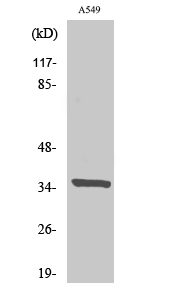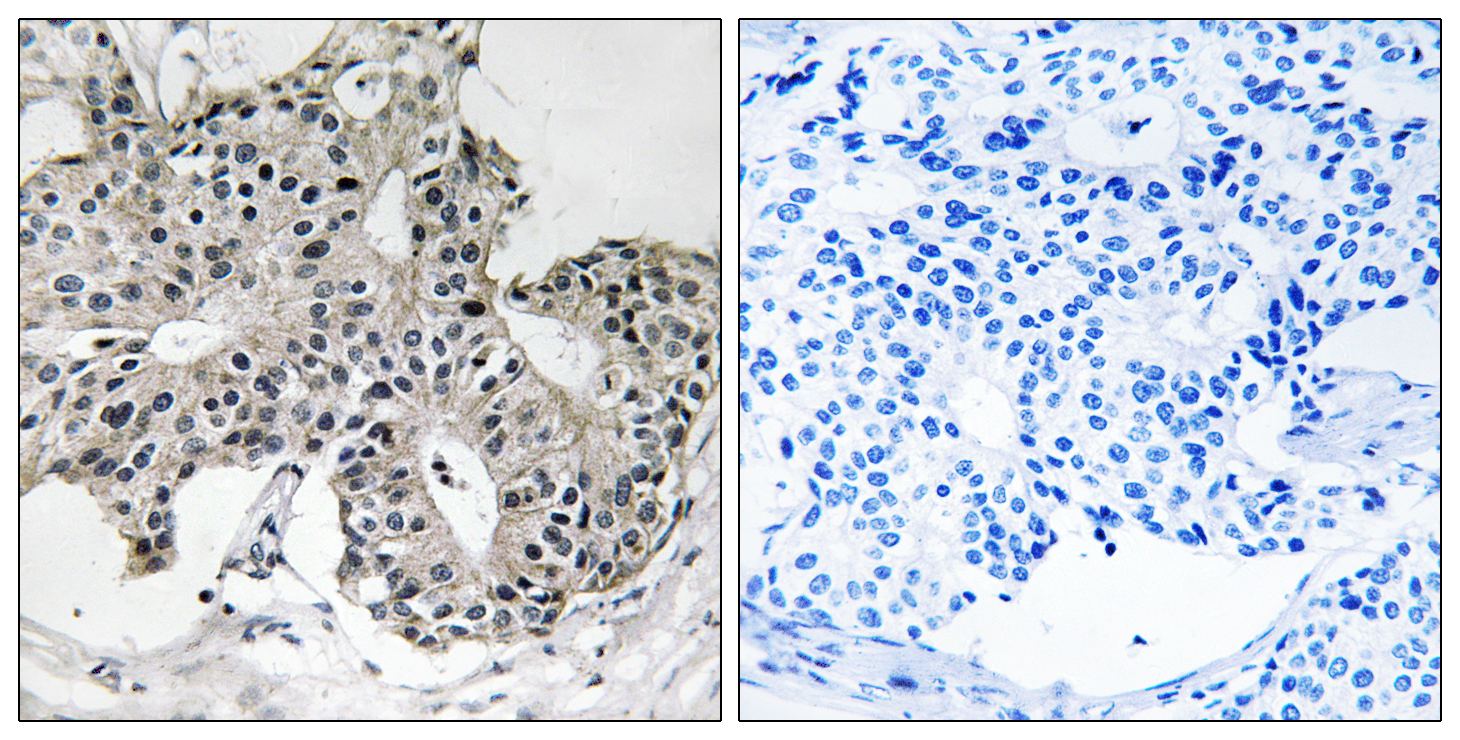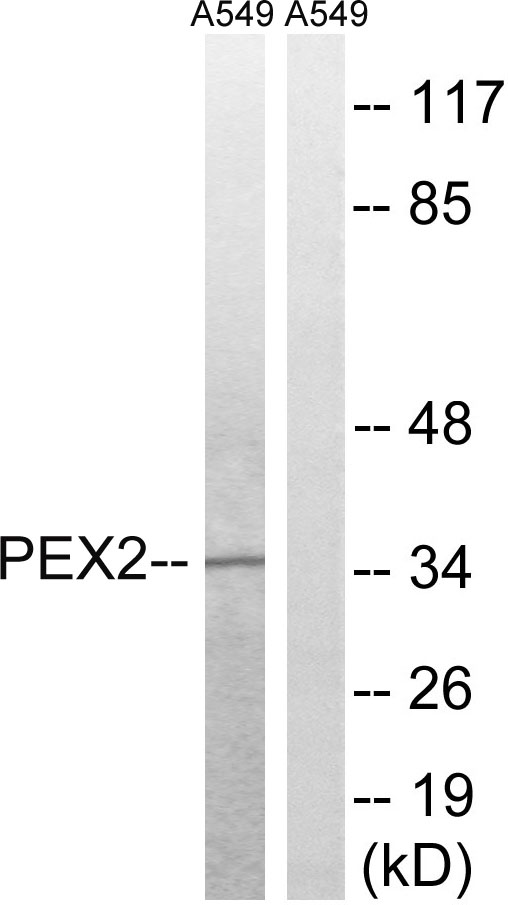Peroxin 2 Polyclonal Antibody
- Catalog No.:YT3675
- Applications:WB;IHC;IF;ELISA
- Reactivity:Human;Rat;Mouse;
- Target:
- Peroxin 2
- Fields:
- >>Peroxisome
- Gene Name:
- PEX2
- Protein Name:
- Peroxisome biogenesis factor 2
- Human Gene Id:
- 5828
- Human Swiss Prot No:
- P28328
- Mouse Swiss Prot No:
- P55098
- Immunogen:
- The antiserum was produced against synthesized peptide derived from human PXMP3. AA range:1-50
- Specificity:
- Peroxin 2 Polyclonal Antibody detects endogenous levels of Peroxin 2 protein.
- Formulation:
- Liquid in PBS containing 50% glycerol, 0.5% BSA and 0.02% sodium azide.
- Source:
- Polyclonal, Rabbit,IgG
- Dilution:
- WB 1:500 - 1:2000. IHC 1:100 - 1:300. ELISA: 1:20000.. IF 1:50-200
- Purification:
- The antibody was affinity-purified from rabbit antiserum by affinity-chromatography using epitope-specific immunogen.
- Concentration:
- 1 mg/ml
- Storage Stability:
- -15°C to -25°C/1 year(Do not lower than -25°C)
- Other Name:
- PEX2;PAF1;PMP3;PMP35;PXMP3;RNF72;Peroxisome biogenesis factor 2;35 kDa peroxisomal membrane protein;Peroxin-2;Peroxisomal membrane protein 3;Peroxisome assembly factor 1;PAF-1;RING finger protein 72
- Observed Band(KD):
- 35kD
- Background:
- This gene encodes an integral peroxisomal membrane protein required for peroxisome biogenesis. The protein is thought to be involved in peroxisomal matrix protein import. Mutations in this gene result in one form of Zellweger syndrome and infantile Refsum disease. Alternative splicing results in multiple transcript variants encoding the same protein. [provided by RefSeq, Jul 2008],
- Function:
- disease:Defects in PXMP3 are a cause of infantile Refsum disease (IRD) [MIM:266510]. IRD is a mild peroxisome biogenesis disorder (PBD). Clinical features include early onset, mental retardation, minor facial dysmorphism, retinopathy, sensorineural hearing deficit, hepatomegaly, osteoporosis, failure to thrive, and hypocholesterolemia. The biochemical abnormalities include accumulation of phytanic acid, very long chain fatty acids (VLCFA), di- and trihydroxycholestanoic acid and pipecolic acid.,disease:Defects in PXMP3 are a cause of Zellweger syndrome (ZWS) [MIM:214100]. ZWS is a fatal peroxisome biogenesis disorder characterized by dysmorphic facial features, hepatomegaly, ocular abnormalities, renal cysts, hearing impairment, profound psychomotor retardation, severe hypotonia and neonatal seizures. Death occurs within the first year of life.,disease:Defects in PXMP3 are the cause of p
- Subcellular Location:
- Peroxisome membrane; Multi-pass membrane protein.
- Expression:
- Kidney,Liver,
- June 19-2018
- WESTERN IMMUNOBLOTTING PROTOCOL
- June 19-2018
- IMMUNOHISTOCHEMISTRY-PARAFFIN PROTOCOL
- June 19-2018
- IMMUNOFLUORESCENCE PROTOCOL
- September 08-2020
- FLOW-CYTOMEYRT-PROTOCOL
- May 20-2022
- Cell-Based ELISA│解您多样本WB检测之困扰
- July 13-2018
- CELL-BASED-ELISA-PROTOCOL-FOR-ACETYL-PROTEIN
- July 13-2018
- CELL-BASED-ELISA-PROTOCOL-FOR-PHOSPHO-PROTEIN
- July 13-2018
- Antibody-FAQs
- Products Images

- Western Blot analysis of various cells using Peroxin 2 Polyclonal Antibody

- Immunohistochemistry analysis of paraffin-embedded human breast carcinoma tissue, using PXMP3 Antibody. The picture on the right is blocked with the synthesized peptide.

- Western blot analysis of lysates from A549 cells, using PXMP3 Antibody. The lane on the right is blocked with the synthesized peptide.



